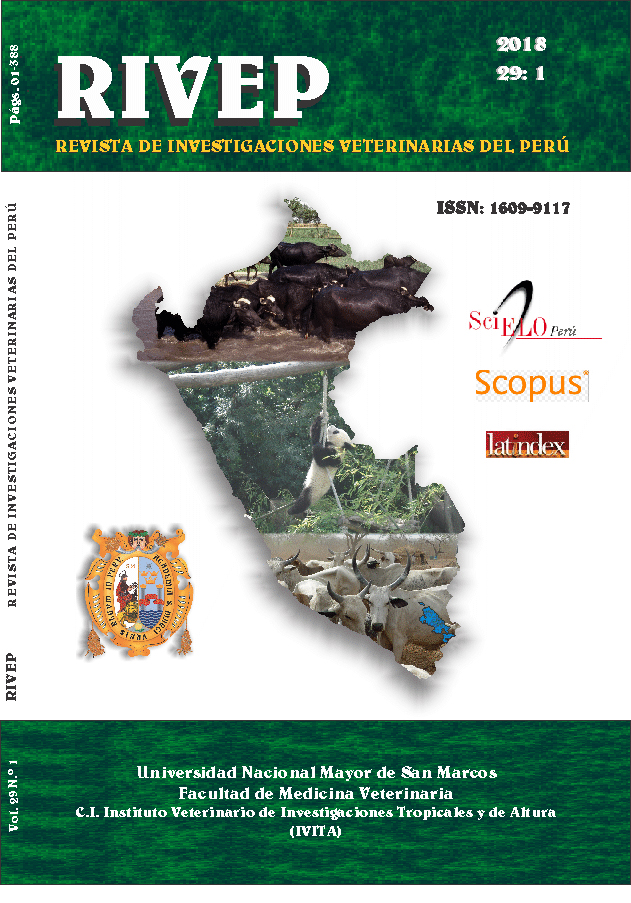Fatty acids profile and energy content in muscle of juvenile of Peruvian rock sea bass (Paralabrax humeralis) conditioned to captivity
DOI:
https://doi.org/10.15381/rivep.v29i1.14196Keywords:
lipid profile, acclimation, energy, nutrition, Peruvian rock sea bassAbstract
The fatty acids profile and energy content in muscle of juveniles of Paralabrax humeralis conditioned at three temperatures (12, 17 and 22 °C) for a period of 90 days was evaluated. For this purpose, 2 m3 fiberglass tanks connected to water recirculation systems with temperature control were used. The fishes were fed with commercial balanced feed (pellets) of 4 mm diameter, 42% protein and 12% fat twice a day. Every 30 days the weight and length of all fishes was recorded. In addition, six fish per acclimation temperature were sacrificed to measure fatty acids concentrations and energy content of muscle tissue. The observations showed that P. humeralis quickly accepts the artificial feed reaching a 95% survival during the evaluation period. The muscle concentration of linoleic and linolenic acids increased more than 100% in the three temperature groups. Contrarily, the concentration of docosahexaenoic acid (DHA), arachidonic acid (ARA), docosapentaenoic acid (DPA) and eicosapentaenoic acid (EPA) decreased by 48, 45, 26 and 20% respectively. The energy content in muscle increased 13% during the conditioning period. It is concluded that P. humeralis adapts quickly to the conditions of captivity; however, the feed provided must contain higher amounts of ARA, EPA, DPA and DHA.Downloads
Downloads
Published
Issue
Section
License
Copyright (c) 2018 Maryandrea Rosado-Salazar, Jhon Dionicio-Acedo, Jorge Flores-Mego, Fabrizzio Vásquez, Lizbeth Cosio, Arturo Aguirre-Velarde

This work is licensed under a Creative Commons Attribution-NonCommercial-ShareAlike 4.0 International License.
AUTHORS RETAIN THEIR RIGHTS:
a. Authors retain their trade mark rights and patent, and also on any process or procedure described in the article.
b. Authors retain their right to share, copy, distribute, perform and publicly communicate their article (eg, to place their article in an institutional repository or publish it in a book), with an acknowledgment of its initial publication in the Revista de Investigaciones Veterinarias del Perú (RIVEP).
c. Authors retain theirs right to make a subsequent publication of their work, to use the article or any part thereof (eg a compilation of his papers, lecture notes, thesis, or a book), always indicating the source of publication (the originator of the work, journal, volume, number and date).










